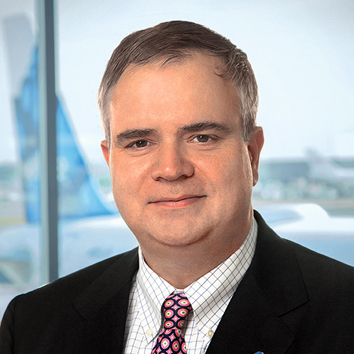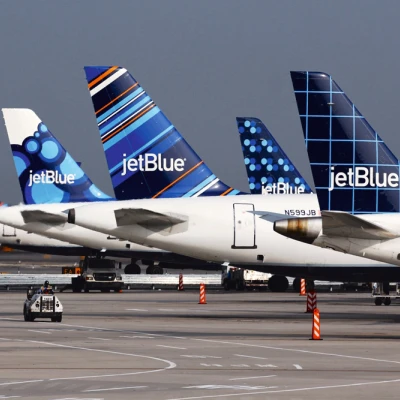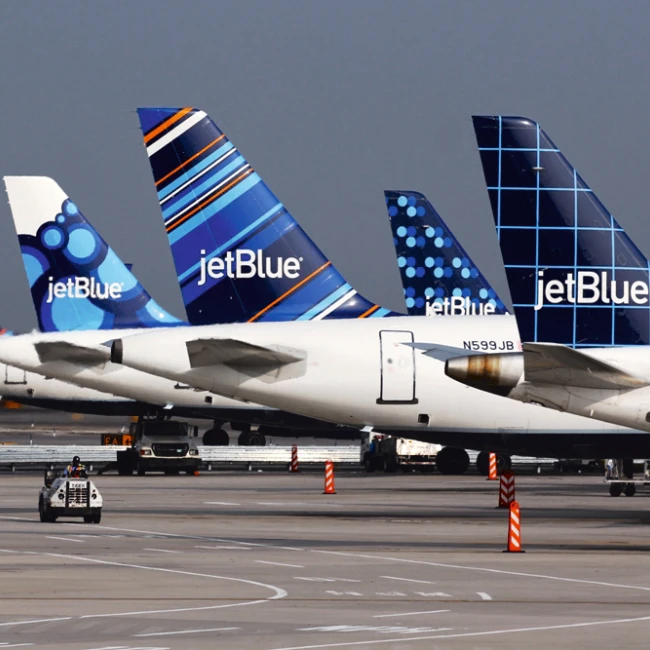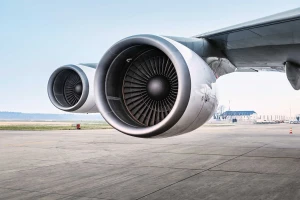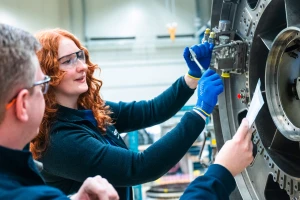aviation
The JetBlue effect: panache without the price tag
Low-cost airline JetBlue Airways drives down prices on every route it flies and still affords customers luxury. Soon it will be adding transatlantic flights to its repertoire.
author: Victoria Nicholls | 6 mins reading time published on: 01.03.2020
author:
Victoria Nicholls
is an international communications expert. At MTU, she specializes in engine programs and market trends.
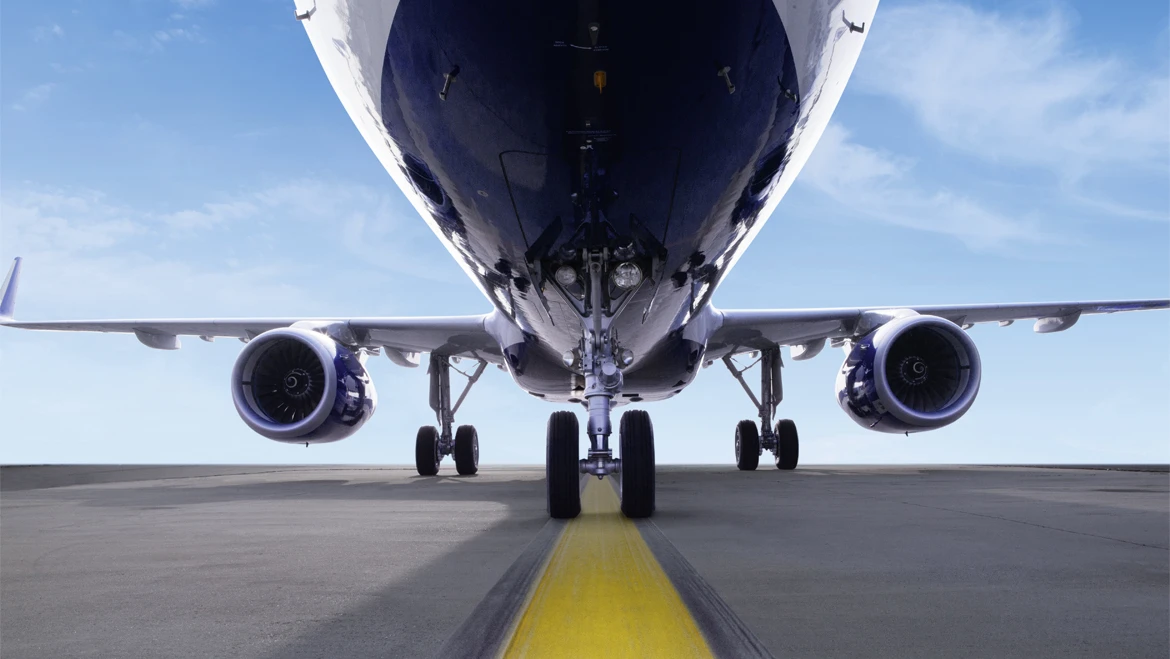
If Robin Hayes, CEO JetBlue Airways, could change anything about aviation, it would be to bring panache back to air travel. Over the years, the focus on cost has seen airlines stripping back on additional services and luxury, he says. “One of my best flying experiences was on Concorde,” he says. “But today, flying can be like a bus journey in some cases, the flair has been lost.” Nonetheless, according to the executive, JetBlue shows this can be done differently. “We bring the humanity back,” he adds. Hayes doesn’t believe that customers should have to choose between service and low fares. He is proud that JetBlue offers the most legroom in economy on U.S. flights, free, high-speed WiFi on board as well as drinks and snacks without charge.
Despite the comforts on offer at JetBlue, there are some things that cannot be changed about the flying experience – for instance jetlag. Hayes’ best trick for beating this travel woe is to get in to the destination time zone as soon as possible. Say for instance he’s flying from New York to London at 8 p.m. Eastern Time, then it is 1 a.m. in London, so he’ll try to sleep as soon as possible once on the plane.
This will come in handy when JetBlue introduces its transatlantic flights from the U.S. beginning 2021. Currently, the airline plans to fly from New York, where the airline is based, and Boston, New England, to London, UK. And with 26 A321 Long Range (LR) and Xtra Long Range (XLR) on order, Hayes is confident new routes within Europe will follow and he also has further Latin American destinations in his sights.
The LRs and XLRs are in addition to more than 120 A220 and A321neos on order that will expand JetBlue’s existing fleet of 60 E190 aircraft as well as nearly 200 A320 and A321s.
The secret sauce
Hayes feels that the culture at JetBlue is what differentiates the airline from its competition. Having a motivated and inspired crew is important to him, “because a happy crew passes this on to customers and offers better service,” he explains. Hayes also likes to sit in the cockpit and talk to the crew when he gets the chance and also pitches in when it comes to cleaning the aircraft during turnaround at an airport. “Every JetBlue crew member that flies with us, that’s our word for employee, helps out at the end of the flight from inflight crew to chief executive officer.” It is also why he prefers the aisle seat over the window, as he’s in a better position to offer his support. Hayes also travels to Florida every two weeks to take part in the orientation of new employees.

passengers each year

crew members

daily flights

cities served. Latin America and Caribbean cities account for one-third of all JetBlue destinations.
The approach seems to be working. In 2019, JetBlue had a great year. The company’s share price increased nearly 20 percent and they were able to increase earnings per share for their shareholders. In a region as consolidated as North America, where the top four legacy airlines have 80 percent market share, this is no mean feat. JetBlue currently has 5 percent of the market in the region and Hayes feels the airline offers an important alternative to customers. “When two legacy airlines compete on a route, they essentially compete to see who can charge the most,” he says. “But when JetBlue offers that route, prices go down. When JetBlue started flying from the Northeast to the West Coast of the U.S. back in 2014 with our Mint experience, we saw premium fares halve, and the market’s expanded since.”
JetBlue Mint: A more personalized service, tailored to the needs of today’s traveler.
He expects the same to happen on transatlantic flights in the near future. “The fares are so obscenely high that it is ripe for a low-cost carrier to come in and discipline the market, lower fares and create more availability. It's a good thing.”
Reducing cost
Of course, when passing on cost benefits to customers, the airline also needs to ensure its own cost base is as efficient as possible. JetBlue committed to a cost reduction of 250-300 million U.S. dollars annually by 2020. As part of this, the airline signed an exclusive 13-year contract for the airline’s V2500 pre-select fleet – powering around half of its Airbus A320ceo fleet of 193 aircraft in 2019. Alongside maintenance, repair and overhaul for the engines, the contract covers the supply of green-time and leased engines in order to avoid costly engine overhauls.
MTU will also support JetBlue with fleet management, engine trend monitoring as well as teardown and material salvation, not only improving cost-efficiency but also increasing predictability and flexibility. Both parties have worked together since their first V2500 contract in 2005 and expanded their cooperation to include a component agreement signed in 2014.
Engine MRO is the biggest maintenance cost for most airlines, including JetBlue. “We wanted to get the best deal possible for the airline and worked hard to do so, but never want to compromise on quality, safety or reliability,” he explains.
“We outsource much of our maintenance, so to us service providers are trusted partners as opposed to simply vendors,” Hayes adds. “Our relationship with MTU is therefore extremely important to us. MTU understands our needs and we have a shared sense of values, it helps both of us be successful.”
Industry future
But cost is not the only serious topic on the agenda at airlines worldwide. Sustainability is generating a lot of debate and headlines. The aviation industry emits carbon dioxide and through, for instance, CORSIA, the Carbon Offsetting and Reduction Scheme for International Aviation, has made commitments to reduce its carbon dioxide emissions to half that of 2005 levels by 2050. “As an industry, we need to fly newer, more fuel efficient engines, such as the geared turbofan, which reduces fuel burn by 16-20 percent,” Hayes explains, referring to the next generation A320neo PW1100G-JM engine in which MTU has an 18 percent program share. Hayes also comments on the need for a scalable, sustainable aviation fuel market. “Furthermore, we need to push air traffic control systems for more efficiency around the world. Airplanes circling and waiting to land is not as efficient as it could be. The system is operating safely, but it’s based on old technology.” JetBlue continues to advocate for the Federal Aviation Authority’s (FAA) efforts towards implementing the Next Generation Air Transportation System (NextGen). NextGen will enable more direct routes and reduce fuel use by optimizing trip durations and improving descent patterns.
JetBlue is set to be an airline that makes travel “quicker, greener and less miserable” in 2020 and beyond, too.
JetBlue also invests in start-ups through JetBlue Technology Ventures. “We’ve taken JetBlue’s original mission to bring humanity back to travel and we’re expanding it to an unprecedented scale: we want to improve the end-to-end experience for travelers everywhere, whether they’re flying or not,” Hayes says.
To this end, JetBlue is set to be an airline that makes travel “quicker, greener and less miserable” in 2020 and beyond, too.



